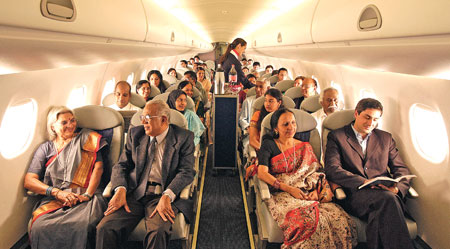INDIAN ARMED FORCES CHIEFS ON OUR RELENTLESS AND FOCUSED PUBLISHING EFFORTS

The insightful articles, inspiring narrations and analytical perspectives presented by the Editorial Team, establish an alluring connect with the reader. My compliments and best wishes to SP Guide Publications.

"Over the past 60 years, the growth of SP Guide Publications has mirrored the rising stature of Indian Navy. Its well-researched and informative magazines on Defence and Aerospace sector have served to shape an educated opinion of our military personnel, policy makers and the public alike. I wish SP's Publication team continued success, fair winds and following seas in all future endeavour!"

Since, its inception in 1964, SP Guide Publications has consistently demonstrated commitment to high-quality journalism in the aerospace and defence sectors, earning a well-deserved reputation as Asia's largest media house in this domain. I wish SP Guide Publications continued success in its pursuit of excellence.
Civil - Embraer Perspective

Why bigger isn’t always better
Outlining the untapped opportunities in a new market segment—India
Analysts were quick to attribute last year’s unprecedented spike in oil prices and the miscalculations of ill-timed fuel hedging contracts as reasons for the dismal financial performance of many of the world’s airlines. The subsequent slump in market demand from the global economic downturn certainly didn’t help the situation.
To counter the downward slide, carriers took immediate steps to stop the haemorrhage by cutting capacity, furloughing staff, increasing fleet utilisation and even parking airplanes. Not only did airlines look for ways to minimise the cost half of the profit equation, they looked for new ways to maximise revenue by extracting more money from already beleaguered consumers for premium seat assignments, checked baggage and on-board catering. Fare increases were cleverly renamed "fuel surcharges.″
Just how much blood can airlines extract from a stone? Analysing what components of the profit formula air carriers can and can not control shows how critical a role aircraft type plays in today’s environment, especially in India.
MAINTAINING CONTROL
Today, few carriers have the financial strength to play and win the fuel hedging game. At one point last year, fuel accounted for some 40 per cent of an aircraft’s direct operating trip cost (DOC) but the dramatic price decline has brought this figure down considerably. Depending on the world region, fuel now represents about 25 to 30 per cent of DOC. According to IATA’s Jet Fuel Price Monitor, the global average cost has dropped nearly 58 per cent compared to April last year. Airline accountants have about as much control over the price of fuel as they do with landing fees, taxation, air navigation charges and insurance rates. Since fuel expense represents such a big portion of DOC, it demands that every available aircraft seat generates sufficient revenue to help offset that expenditure. Flying empty seats and heavily discounting fares to fill excess capacity doesn’t maximise operating margin. One company that saw an opportunity to offer airlines an alternative to the empty seat syndrome was Brazil’s Embraer, manufacturer of a new family of four 70 to 120-seat jets. "We conceived them specifically to reduce the performance, aerodynamic and economic inefficiencies associated with flying airplanes that are either too big or too small for many of the world’s markets," according to Luiz Chiessi, Embraer’s Vice President of Market Intelligence. "Our E-Jets product line lets airlines derive cost benefits using airplanes designed to minimise those inefficiencies while delivering a high quality passenger experience that’s normally associated with large aircraft."





